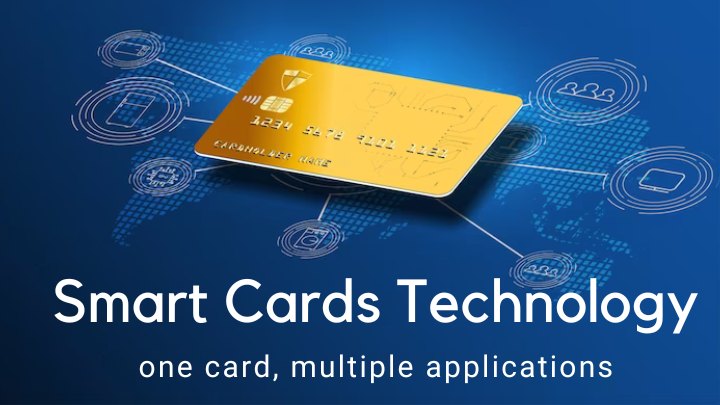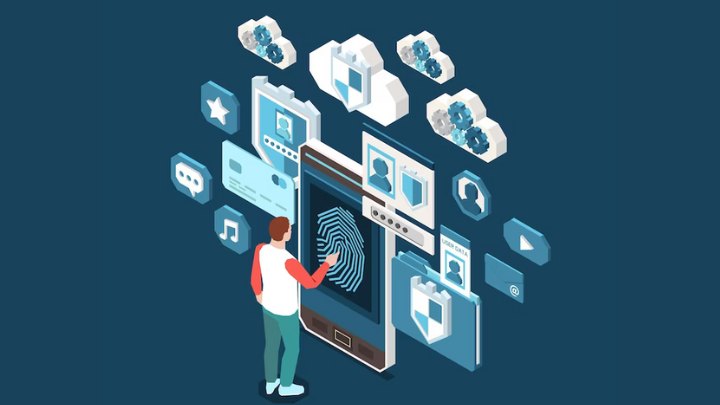
Technology is ever evolving. Now-a-days, it is growing by leaps and bounds. Wave of tech industries has taken the entire world. IoT, Data science, SaaS, Crypto and many more are changing its pace everyday. It keeps getting better and smarter, making our lives easier and more exciting. Smart cards, a revolutionary tech, is one of the new thing to talk about.
We will cover a lot about it in this blog article.
What is Smart Cards?
Smart cards are cutting-edge technologies that have completely changed a number of aspects of our life, including access control, identity, and secure transactions. These tiny plastic cards can securely store and process data as they are equipped with embedded integrated circuits. Due to its small size and advanced technology, smart cards now provide greater security, simplicity, and usefulness for various applications.
Smart cards are combined with new technologies, including biometrics, near-field communication (NFC), and the internet of things (IoT). They have gone from contact-based to contactless and dual-interface cards. Their capacity to securely store sensitive information and carry out cryptographic operations makes them popular in industries including banking, healthcare, transportation, and government services.
Applications of Smart Cards
These cards also guarantee data integrity and protection. They are set to play a more significant part in determining the future of safe digital transactions and allowing seamless connection in our increasingly connected world as they continue to develop.
With the development of new technologies, smart cards are becoming more secure and useful. Key upcoming technologies for smart cards include the following:
1. Contactless/Near Field Communication (NFC)
Smart cards with NFC capabilities offer simple and secure contactless connections with compatible devices. This technology enables access control, data transfer, and quick transactions. For example, an Indian startup TapOnn launched a compact digital business card alternative that utilizes NFC technology. The TapOnn card, a small coin-sized device, contains user contact details and can be easily tapped against a smartphone’s NFC reader for seamless information transfer.
It also features a QR code for scanning. The TapOnn card offers sustainability and convenience and eliminates the need for paper business cards. Such cards with advanced technologies will continue to be launched in the coming years.
2. Biometric authentication
Smart cards are made more secure by integrating biometric identification, such as fingerprint or face recognition. The card contains biometric data to authenticate the cardholder and ensure secure access to confidential data or services. For example, eSignus and IDEX Biometrics partnered to launch a biometric smart card using fingerprint recognition. The card offers secure and convenient user authentication for applications such as online banking and access control. This collaboration marks a significant advancement in biometrics, revolutionizing authentication with enhanced security and convenience.

Moreover, MKSmart, a global smart card manufacturer, partnered with IDEX Biometrics to launch biometric payment cards. Using IDEX Biometrics’ TrustedBio solution, the cards authenticate cardholders through fingerprint recognition, providing enhanced security compared to traditional cards. With no need for PIN codes or signatures, these cards offer convenience.
3. Dynamic data authentication
Smart cards implement dynamic data authentication mechanisms to produce unique transaction codes for every transaction. In addition to guarding against fraud and unauthorized cloning, these cards prevent the reuse of transaction data.
For example, Gemalto, a well-known digital security company, has an extensive knowledge of smart card technology, and has been instrumental in integrating dynamic data authentication (DDA). Gemalto offers a wide range of smart card solutions adapted to the demands of many industries, including banking, government, and telecommunications.
Have you ever wondered how your credit card keeps your money safe when you use it to make a purchase? Dynamic Data Authentication works for it. DDA is like a secret code that verifies if your card is genuine or not. When you swipe your card, it generates a unique code for that transaction. This code is created by a microchip inside your card, which is different every time you use it. It’s like a fingerprint for your payment. This code is then checked by the bank to ensure that it matches the information on your card.
4. Cryptographic algorithms
Cryptographic algorithms protect our information online. They help keep our messages, passwords, and personal data safe from hackers and prying eyes. These algorithms use complex math to scramble our information into a jumbled mess that only the intended recipient can unscramble using a special key.
There are different types of cryptographic algorithms, like symmetric and asymmetric encryption. Symmetric encryption uses the same key to both scramble and unscramble the message, while asymmetric encryption uses a pair of keys, one for scrambling and another for unscrambling.
Smart cards use advanced cryptographic methods such as RSA and Elliptic Curve Cryptography (ECC) for safe data transfer and storage. To protect sensitive data, these algorithms offer strong encryption and authentication procedures. For example, NXP Semiconductors is a market leader in secure connectivity solutions, such as smart card chips. They specialize in developing and producing various microcontrollers and certain parts designed to enable cryptographic algorithms and encryption protocols.
5. Internet of Things (IoT) integration
IoT ecosystems use smart cards to enable communication and interaction among IoT devices. This integration opened doors for new applications, including linked healthcare devices, secure IoT device provisioning, and smart home access management. For example, Infineon Technologies actively integrated IoT features into smart card systems. They developed secure microcontrollers and smart card chips for IoT connections. This link allows smart cards and IoT systems to communicate and interact safely.

IoT integration is like a big team effort, where all the devices work together to make your life smoother and more convenient. It’s like having a personal assistant who knows exactly what you need and when you need it. It’s like having a superpower to control and monitor our surroundings from the palm of our hand. As technology continues to evolve, we can expect even more exciting possibilities and innovations from the world of IoT integration.
6. Secure element integration
Smart cards incorporate certain components, such as Trusted Execution Environments (TEEs) or secure components (SEs), to offer safe processing and storage of sensitive data. These hardware-based security mechanisms guard against tampering and unauthorized access. For example, STMicroelectronics is a semiconductor company focusing on secure element solutions for smart cards. It provides various solutions, including secure microcontrollers and embedded secure components, especially for safe storage, cryptographic operations, and secure communication for smart card applications.
Secure elements work hand in hand with various applications, including mobile payment services and identification verification systems. When we make a payment using our smartphone or unlock a device with our fingerprint, the secure element quietly does its job in the background, validating our identity and protecting our data. While the technology behind it is complex, we don’t need to be tech wizards to benefit from its protective powers. Our devices handle the intricate processes, allowing us to focus on what matters most—convenience and peace of mind.
Conclusion
In conclusion, smart cards have transformed access control, identity management, and secure transactions. They securely store and process data, allowing improved security, simplicity, and utility. Biometrics, NFC, IoT integration, dynamic data authentication, cryptographic algorithms, mobile device integration, blockchain technology, and secure element integration define the future of smart cards.
They provide contactless connectivity, biometric identification, unique transaction codes, secure data transmission, IoT communication, mobile integration, and hardware-based protection. Smart cards will play a vital role in secure digital transactions and seamless connection in the coming years.
About the author
Shyam Gupta is been a researcher for more than three years. He has been closely monitoring a number of industries, such as Consumer Electronics, Robotics, and Electric Vehicles. He is passionate about writing articles and intends to use blogs and articles as a medium to inspire others. He spends his time reading and painting when he is not keeping up with industry news and trends. The author can be reached at shyam.gupta@nextmsc.com
